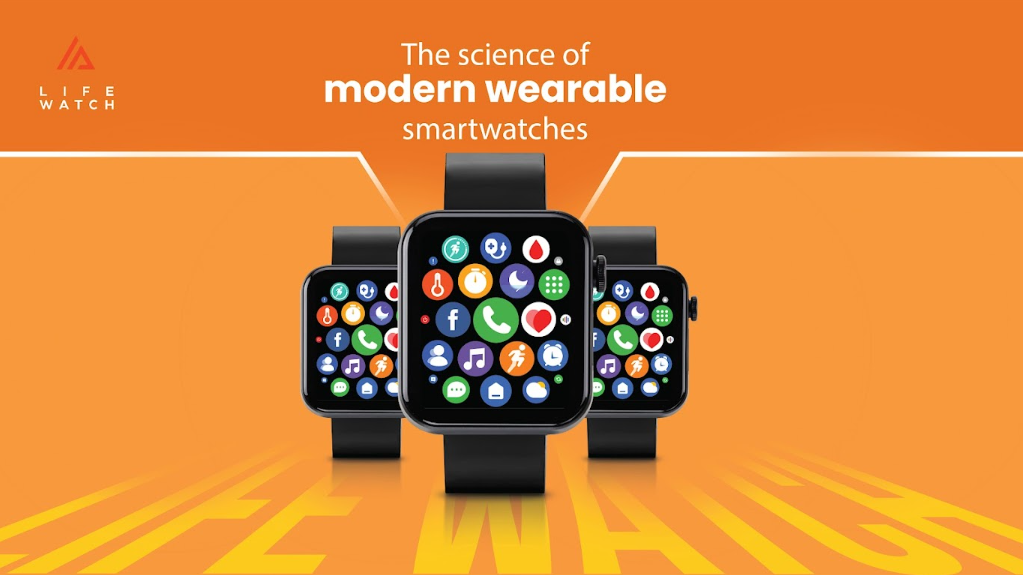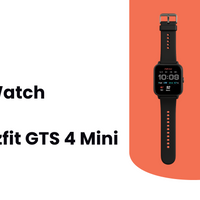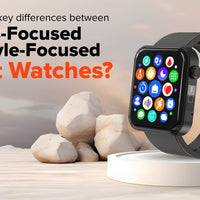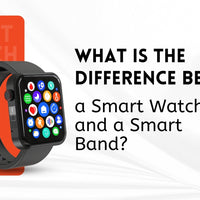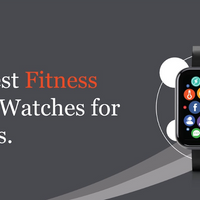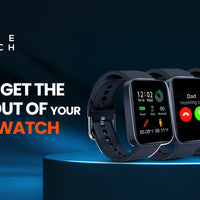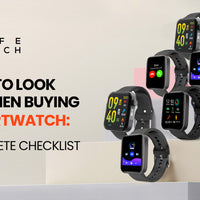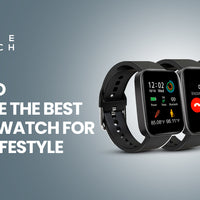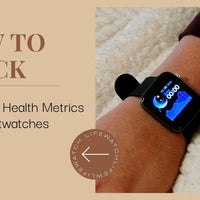Summary:
-
Smartwatches use advanced sensors like PPG, accelerometers, and gyroscopes to measure heart rate, sleep patterns, physical activity, and more.
-
Core components such as OLED or AMOLED displays, long-lasting batteries, and seamless connectivity combine hardware and software for a streamlined user experience.
-
Smartwatches support fitness tracking, heart health monitoring, sleep analysis, and stress management, providing actionable insights for improved wellness.
-
Operating systems like watchOS, Wear OS, and Life Watch’s simple interface enhance usability, app compatibility, and ecosystem integration.
- Future advancements may include non-invasive glucose monitoring, extended battery life, AR overlays, and more personalized, AI-driven health recommendations.
Smartwatches have evolved far beyond their early days as digital timekeepers. Today, they’re powerful health and fitness tools worn on our wrists, packed with sensors and software capable of tracking everything from your heart rate to your sleep quality. But what’s the science behind these everyday devices, and how do they actually work?
At the heart of every smartwatch is a blend of biology, engineering, and data science. Technologies like photoplethysmography (PPG), accelerometers, and AI-driven analytics transform raw sensor data into real-time health insights. As these wearables continue to evolve, their impact on personal wellness becomes more profound.
The Science Behind Smartwatch Sensors
Photoplethysmography (PPG)
PPG is the core technology behind heart rate and blood oxygen monitoring in most smartwatches, including Life Watch. The process is relatively simple in principle: the smartwatch emits light (typically green or infrared) onto the skin, and a photodetector measures how much light is reflected back.
As blood volume in the vessels changes with each heartbeat, so does the amount of reflected light. This variation allows the watch to detect heart rate and blood flow patterns.
Beyond basic heart rate tracking, PPG sensors are now used to detect irregular heart rhythms, estimate blood pressure trends, assess vascular aging, and even aid in early identification of seizure risks. However, it’s important to note that PPG accuracy can vary based on skin pigmentation, motion, and placement, which means results should be interpreted as general wellness indicators rather than clinical diagnostics.
Other Key Sensors
Smartwatches incorporate multiple sensors to create a fuller picture of your health and movement.
Accelerometers detect movement and orientation, allowing your watch to count steps, track workouts, and determine physical activity levels. Gyroscopes complement accelerometers by measuring rotation, which improves accuracy during dynamic movements like running or swimming. GPS chips enable outdoor tracking for walking, cycling, or route mapping, while barometers track elevation, especially helpful for hikers or trail runners.
Together, these sensors create a seamless experience that turns your daily motion into measurable data.
Core Components of Modern Smartwatches
Smartwatches are more than a collection of sensors; they’re sophisticated ecosystems of hardware and software working in sync.

Sensors
Heart rate monitors, accelerometers, gyroscopes, and GPS modules are now standard in most modern devices. Life Watch includes core sensor technology to support fitness tracking, heart health monitoring, and daily wellness logging without overcomplicating the user experience.
Display
The display is a critical interface between you and your data. High-resolution OLED or AMOLED screens provide bright, vibrant visuals and make touch navigation intuitive, even under sunlight. Some models balance sharp visuals with energy efficiency to prolong battery life.
Battery
Battery life remains one of the top considerations for users. Newer models, including Life Watch, feature advanced power management systems and optimized chips to extend battery performance without sacrificing key features. While premium devices often require daily charging, efficient models can last multiple days between charges.
Connectivity
Smartwatches rely on Bluetooth, Wi-Fi, and in some cases, NFC or cellular connectivity to sync data and interact with apps. These connections allow you to receive notifications, control music, or even make contactless payments from your wrist. Seamless smartphone integration ensures your watch becomes an extension of your digital life.
Health and Fitness Tracking Capabilities
Health and fitness tracking is at the core of what makes a smartwatch valuable. With powerful sensors and smart software, these wearables translate real-time activity into actionable feedback.
![]()
Fitness Tracking
Basic activity metrics such as steps taken, calories burned, and distance traveled are just the beginning. Advanced watches can also track specific workouts like strength training, swimming, yoga, and high-intensity intervals. With the right data, users can personalize their goals and improve overall fitness.
Heart Health Monitoring
Continuous heart rate monitoring is now a standard feature in most smartwatches. More advanced models may also offer ECG (electrocardiogram) capabilities, helping to detect irregular heartbeats or atrial fibrillation. These features, while not a substitute for professional medical care, can prompt earlier conversations with healthcare providers.
Sleep Analysis
Smartwatches use movement and heart rate data to detect sleep duration and quality. Some models also break down sleep into stages such as light, deep, and REM to help users better understand how rested they truly are. Regular sleep tracking can reveal trends and help users develop better habits.
Stress Management
Smartwatches are now incorporating stress tracking features, which rely on heart rate variability (HRV) to assess physical stress levels. Paired with guided breathing or mindfulness features, these tools help users stay grounded and regulate their emotional health throughout the day.
Smartwatch Operating Systems
The user experience of a smartwatch is defined in part by the operating system (OS) it runs on. Different OS platforms offer different levels of app compatibility, customization, and ecosystem integration.
Apple WatchOS is known for its intuitive interface, seamless pairing with iPhones, and strong health-focused features. Google’s Wear OS supports a range of Android-friendly watches and offers Google Assistant, app integration, and flexible design options. Samsung’s Tizen OS provides smooth navigation and long battery life, often via rotating bezels and lightweight UIs.
Life Watch operates on a simplified, user-friendly interface, making it approachable for users who want essential health insights without navigating complex app ecosystems.
The Future of Smartwatches
As smartwatch technology advances, we can expect even greater precision, personalization, and capabilities.
Improved Health Monitoring
Future devices may include non-invasive blood glucose monitoring, more accurate blood pressure readings, and expanded use of AI to analyze long-term health data and make personalized recommendations.
Enhanced Battery Life
Next-gen batteries like solid-state and improvements in energy-efficient display technology will help extend battery life further, making multi-day wear even more practical.
Greater Customization
Custom watch faces, interchangeable straps, and adaptive interfaces will allow users to tailor devices to their personal style and health priorities.
Augmented Reality (AR) Integration
Emerging AR features may allow users to view real-time data overlays during runs, workouts, or navigation, bringing smartwatch functionality into a more immersive environment.
Advanced Communication Features
With 5G connectivity on the horizon, smartwatches may soon support real-time video calls, voice assistants with faster responses, and instant access to cloud services directly from the wrist.
Key Takeaways
Smartwatches have become far more than wearable gadgets; they’re data-driven wellness tools that combine advanced sensors, real-time monitoring, and personalized insights. From heart rate and sleep analysis to GPS-powered fitness tracking, they support daily health in increasingly sophisticated ways.

Life Watch embodies the best of this evolution: simple, science-based technology that empowers you to live smarter, move more, and stay on top of your wellness goals.
Explore what smartwatches can do for your lifestyle, and discover how Life Watch makes cutting-edge health technology more accessible.
